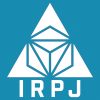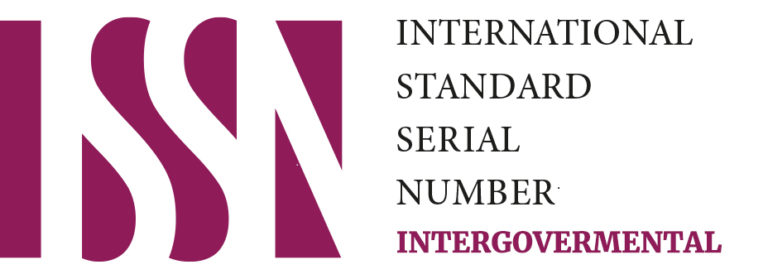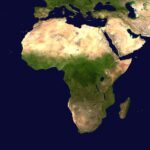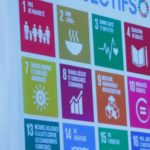ABSTRACT
The pandemic declared by the World Health Organization in March due to COVID-19 highlights the deepening differences between two opposed visions in the realm of international affairs. One that favors cooperation, multilateralism, and globalization; and another one that inclines towards nationalism and isolationism, while being skeptical of international institutions. These two contrasting worldviews align with the two most relevant historical theories in international relations: realism and liberalism.
INTRODUCTION
As the 21st century runs into its third decade, the world faces one of its most challenging scenarios in contemporary history. A months-long pandemic that menaces to extend for years, until a vaccine is found and able to be distributed widely, has put a break on global economic growth; brought foreign trade to its knees; halted the movement of people, goods and services; disrupt tourism, migration and remittances; launched a stark competition to discredit multilateralism; slowed cooperation among nation-states; and weakened international institutions.
This outrageous scenario would have been unthinkable just a few months back and poses a big conundrum for foreign policy practitioners and international relations theorists and scholars across the world. When will this profound crisis be over? How the world is going to look like once we get there? What would the consequences be for the realm of international relations? These and other relevant questions pop into academic conversations during this unprecedented time and it is researchers’ job to try to come up with answers for them.
The world we are leaving behind is the inheritor of years of cooperation, global peace, foreign trade, the fight for human rights and climate change, and strong and relevant international institutions. The one being built as a result of coronavirus and global recession is one of tampered cooperation, barriers to trade, increased authoritarianism, and debilitating international institutions. How different are those two worlds? If you ask me, they are precisely the opposite. The former is the world of globalization, which seems at odds with today’s fluctuating reality and, apparently, is coming to an end; and the latter is the world of nationalisms based on isolationist principles and supported by populist politicians and extreme regimes, situated either on the left or on the right end of the political spectrum.
From an international relations theoretical standpoint, the world as we knew it is one best defined and understood through liberal theory and the one that is being formed is a world clearly explained by realist theory. The purpose of this paper is to analyse the transition we are experiencing in the world given the current systemic changes and look at the before and probable after through the lenses of the two most discussed, opposed and used international relations theories: realism and liberalism.[1] Since it is my believe that these two world visions colliding nowadays as a result of the above-mentioned phenomena, are neat reflections of those two theorical approaches’ premises.
THE END OF GLOBALIZATION?
Has COVID-19 killed globalization? Is the question with which the well-known and respected British weekly magazine The Economist titled one of their Op-Ed’s in early May of 2020, in which they discussed the future scenarios we are to expect once the pandemic is over and economic recovery starts. The piece, signed by the reputed publication’s editorial team, concludes globalization is not necessarily over but will suffer greatly from the current circumstances, especially since its troubles started before coronavirus hit the world’s markets. Their argument is quite emphatic when it comes to imagining the future scenarios in terms of international relations:
The open system of trade that had dominated the world economy for decades has been damaged by the financial crash and the Sino-American trade war. Now it is reeling from its third body-blow in a dozen years as lockdowns have sealed borders and disrupted commerce. The number of passengers at Heathrow has dropped by 97% year-on-year; Mexican car exports fell by 90% in April; 21% of transpacific container-sailings in May had been cancelled. As economies reopen, activity will recover, but do not expect a quick return to a carefree world of unfettered movement and free trade. The pandemic will politicize travel and migration and entrench a bias towards self-reliance. This inward-looking lurch will enfeeble the recovery, leave the economy vulnerable and spread geopolitical instability.[2]
While the circumstances for shifting views of the world order we are currently experiencing were set years before this pandemic hit the globe, it is only now that the real consequences of these circumstances are starting to become clearer and making us realize globalization, and the world, as we know them, might very well cease to exist.
Even though globalization is a considerably new concept in the realm of social sciences, not really popularized until after 1990, following its first appearances in academic lingo during the previous decade, it defines a series of processes that have been present throughout human history. According to the definition put together by Martin Griffiths, globalization is “a term that refers to the acceleration and intensification of mechanisms, processes, and activities that are allegedly promoting global interdependence and economic integration.”[3]
Despite being more closely linked at a conceptual level with the events that happened during the last years of the 20th century, globalization can actually help us describe many other world scenarios previous to the one that followed the end of the cold war and the beginning of a multipolar world. The latter half of the 19th century, period of expansion of the British imperialism and mercantilism and of the cultural fecundity and political might of the Austro-Hungarian and Ottoman empires is a clear example of a world that was global. Same could be said about the earlier part of the 17th century with the Spanish and Portuguese empires and the consolidation of commerce across the Pacific and Atlantic Oceans.
Therefore, globalization might be a recently coined term, but it has a scope that transcends centuries. Especially if we consider the many layers it has as an academic term, as Griffiths himself points out, “[globalization is] a revolutionary concept, involving the deterritorialization of social, political, economic, and cultural life.”[4]
Most of the periods in which we have experienced glimpses of globalization, being it in the 17th, 18th, 19th, 20th or 21st centuries, have been characterized, as Griffiths highlights, by robust exchanges not only in terms of trade but of people and ideas across the world. They have been periods of increased cooperation among nation-states and of strengthened international institutionalism and international law. They have been periods of sustained peace and economic prosperity; both indispensable elements for the commercial and human exchanges inherent to globalization to take place and shape, to a certain degree, world dynamics.
All these characteristics are synonymous with the way most thinkers of liberalism view, explain and define the world. John Locke, Jean Jacques Rousseau or Immanuel Kant, philosophers and thinkers upon whose writings and ideas liberalism as a theory of international relations was conceived, would agree on the fact that a globalized world is one where possibilities arise. As Jennifer Sterling-Folker accurately argues in her book, liberalism should be defined “as the exploration of what prevents progress from being achieved, with the underlying assumption being that progress could be realized if we could uncover the barriers to collective action and promote their resolutions.”[5]
A globalized world like the one we had right before the beginning of the latest pandemic was a world where collective action had a huge weight, where barriers were lifted, and where the free flow of goods, peoples and ideas was valued and sought after. It was, above all, a world any liberal international relations theorist or scholar would aspire to have. Is this globalized liberal world over? Which are the alternatives to it? How the post-COVID-19 world might look like? The answers to these three questions pass through a realist perspective.
BACK TO REALISM
One of the first, almost immediate, responses by countries and governments around the globe once the World Health Organization (WHO) officially declared COVID-19 as a pandemic, was the closure of borders and of international maritime, terrestrial, and aerial traffic. Tens of thousands of people and merchandise were stranded and required a magnanimous diplomatic and logistical operation on behalf of Ministries of Commerce and Foreign Affairs across the world. Up to this day, disruptions created by the coronavirus epidemic are far from solved and a great majority of border crossings continue with a semi-permanent shutdown for international travellers and trade alike.
Even though this abrupt halt to global dynamics is directly linked to the unprecedented threat posed by the appearance of the atypical virus, it is nevertheless symptomatic of a world which is less and less willing to cooperate and more defensive and reactive than never before since the end of the cold war.[6] The egregious disregard of governments in Europe, Africa, Asia, or the Americas, when it comes to the WHO’s recommendations; the intent to investigate the WHO’s coronavirus response;[7] the raise in vitriolic narratives between countries like the United States, France, the United Kingdom, or China, when it comes to their respective responses and responsibilities vis-à-vis the spread of COVID-19; and the imminent recession across most economies, regardless of their level of engagement in global finances and/or their development degree, are crude examples of the new world we are living in. A world where relative power; confrontation; an almost inherent mistrust of other countries and of international institutions, like the WHO; and a despise for the still reigning international order, are the rules of the game. An unmistakably realist world.
If we are to summarize what the different realist approaches to international relations have in common, it would be wise to have a look at Sterling-Folker’s precise terminology compendium: power. As the author suggests “what distinguishes the realist treatment of relative power from its use in other perspectives is the casual omnipotence it is assigned. All outcomes in realist analysis, whether they involve trade negotiations, human rights violations, or military intervention, are ultimately dependent on the relative power of the actors involved, with those having greater power determining outcomes according to their own interests.” [8] To this list we might very well add, under the current circumstances, health emergencies or pandemics. Nothing fits more accurately in the realist cosmovision than the race to find a vaccine to treat COVID-19. France, the United States, China, and a few other members of the global economic elite are making use of all their wealth, resources, and diplomatic power to come first. And in spite of few examples like the ones led by Norway or Mexico, that aim at cooperating and providing universal access to means and treatments to fight the epidemic, the most likely outcome would be one of relative power, in realist terms.
Hence, the world we are currently experiencing is one best approached from a realist perspective, one in which confrontation is preferred over cooperation and one in which barriers, physical when it comes to borders, or economic when it comes to trade, are chosen over the free flow of peoples or, in this case, vaccines. But, is this the world that will prevail once the current state of emergency around the globe is over? Do we actually have a choice or as French philosopher Amin Maalouf describes in his latest book, “The wreck of civilizations”, the world we are facing is for decades to come a world “where identitarian agitation prevails, [and] everybody is likely a traitor to the eyes of someone else”, a world in which “…every minority, every migrant, every cosmopolite, everyone holding two nationalities…[becomes] a potential traitor…”[9] I consider there is room for a different world, neither the liberal ideal we had before nor the sombre realist scenario we are currently facing. There is opportunity for creating a totally new paradigm.
A NEW PARADIGM
The dilemma between liberal and realist approaches in the international affairs arena is as old as the Peace of Westphalia. For as long as we have had nation-states, the ultimate and perennial core of international relations, there have been debates and discussions on the academic and on the diplomatic fronts as to which of the two main world views is the rightful one when it comes to describing international reality and drafting foreign policy recommendations. And even though this might be a legitimate dilemma it is also a false one.
The world itself is in constant movement, as are politics and diplomacy; processes and events keep shaping the world of foreign affairs and make rather pointless to simply based ones’ views on realist or on liberal premises, since world dynamics are almost always an eclectic combination of both. Today’s pandemic ridden world is a perfect example of that, while globalization keeps being demonized by nationalist isolationism in every corner of the world it continues to be the way in which business are conducted, and most probably will continue to be so once the emergency is over, given the intricated interdependence and integration between nations and economies worldwide.
In this scenario, it would be wiser to think of a new paradigm, one that allows us as scholars and/or as international relations practitioners, to break free from the intrinsic limitations both the realist and the liberal approaches have, and imagine innovative approaches and ways to define and shape our world. From this perspective, professor Amitav Acharya theory of a multiplex world is worth exploring. For Acharya one of the principal obstacles for international relations as a discipline so far is the fact that it has been mainly in the hands of “Western” thinkers, academics, and scholars. According to Acharya, the world reflected by these researchers is not “the real world”, but a biased one, since, as the author argues, “the world is changing, and they are not accepting that reality.”[10]
Following Acharya’s argumentation, a new paradigm to approach the world in formation during this unprecedent pandemic would not only look at pre-existing conditions like relative-power, international law and institutions, nation-states, and balance of power; but will also, ideally, take into account the prevalent ethnocentric view that for so many years has been at the centre of international relations as a discipline. This new paradigm should have a deeper look at the world’s history in order to create a sounder understanding of it; it should approach interdependence as a complex phenomenon rather than as a simple power distribution formula; it ought to understand the world as a combination of multiple government layers, including the international and the regional spheres; and it should consider the indivisible correlations between domestic policies, local agents, and international relations processes and events.[11]
CONCLUSION
The world as we know it is changing and will unequivocally become a different one once the current state of shock produced by the COVID-19 pandemic gives way to a “new normal”. Globalization which is the predominant characteristic of today’s world has greatly suffered during this transition period, as a result of processes started way before the health emergency was declared, and most probably come out of this period fairly weaken but not completely defeated. Mainly because the intricated network of trade, commercial, cultural, social, and political interdependence across nations and territories is not going to disappear.
At the same time, the long list of governments and foreign ministries embracing a more isolationist and nationalist worldview during this period of transition and as a result of processes predating it, might very well be increased once coronavirus is controlled. However, their conjunct approach towards international reality based on relative power calculations and a general mistrust of international institutions and cooperation will not be able to triumph over market, cultural and social forces nurtured by globalization.
The traditional realist and liberal approaches that have served scholars and academics so well and inspired foreign policy strategies by countries around the world, need to be reassessed. Their definitions of power relations, cooperation, institution-building, and peace, would need to be demystified and detached from their strong roots in Western theoretical traditions to allow for a new paradigm to emerge that will better help us understand the world and define foreign policy priorities, regardless of our size and power as nation-states.
REFERENCES
- In her thorough book Making Sense of International Relations Theory, Jennifer Sterling-Folker makes a remarkable synthesis of these two seemingly colliding theories of International Relations. When discussing realism, the author notes what is simply the best well-known fact about it: “realism is typically described as the dominant theoretical perspective in the International Relations discipline” (2008, 13). And when talking about liberalism, she rightly notes: “if realism can be characterized as the dominant theory in the discipline, liberalism must certainly be identified as its primary theoretical competitor” (2008, 55). By doing so, Sterling-Folker offers us the opportunity to contrast the way in which each of those mother theories sees the world and to use their almost opposite theoretical frameworks to describe today’s shifting world visions.
- “Has COVID-19 killed globalization?”, Leaders, The Economist, May 14, 2020. Accessed May 18, 2020.
- Martin Griffiths et. al., “International Relations Key Concepts”, 2nd Edition, New York, Routledge, 2008, p. 131.
- Ibidem.
- Jennier Sterling-Folker, “Making sense of International Relations Theory”, Boulder: CO, Lynne Rienner Publishers, 2008, p. 56.
- A good part of the 20th century, particularly since the end of the Second World War, the bipolar world dissected into American and Soviet areas of influence was one in which realism was the king. As Thomas Meaney, describes in his review of the book “The Myth of Henry Kissinger”, for The New Yorker magazine, “For more than sixty years Henry Kissinger’s name has been synonymous with the foreign policy doctrine called “realism”…[mostly because of] his willingness to speak frankly about the U.S.’s pursuit of power”.
- On May 17, 2020, a resolution calling for “an impartial, independent, and comprehensive” evaluation of the actions of the WHO and its response to the pandemic, was introduced at the international organization’s headquarters with the support of 116 of its members.
- Jennier Sterling-Folker, “Making sense of International Relations Theory”, Boulder: CO, Lynne Rienner Publishers, 2008, pp. 13-14.
- Amin Maalouf, “Le naufrage des civilisations”, Paris, Bernard Grasset, 2019, p. 266.
- Amitav Acharya, “Political Science and International Relations in a Multiplex World”, Opening Doctoral Academic Year 2014/15 Lecture, Institute for European Studies, Faculty of Social and Political Sciences, Université Libre de Bruxelles, October 16, 2014, 19’20’’.
- Ibidem.
Publisher information: The Intergovernmental Research and Policy Journal (IRPJ) is a unique interdisciplinary peer-reviewed and open access Journal. It operates under the authority of the only global and treaty-based intergovernmental university in the world (EUCLID), with other intergovernmental organizations in mind. Currently, there are more than 17,000 universities globally, but less than 15 are multilateral institutions, EUCLID, as IRPJ’s sponsor, is the only global and multi-disciplinary UN-registered treaty-based institution.
IRPJ authors can be assured that their research will be widely visible on account of the trusted Internet visibility of its “.int” domain which virtually guarantees first page results on matching keywords (.int domains are only assigned by IANA to vetted treaty-based organizations and are recognized as trusted authorities by search engines). In addition to its “.int” domain, IRPJ is published under an approved ISSN for intergovernmental organizations (“international publisher”) status (also used by United Nations, World Bank, European Space Agency, etc.).






